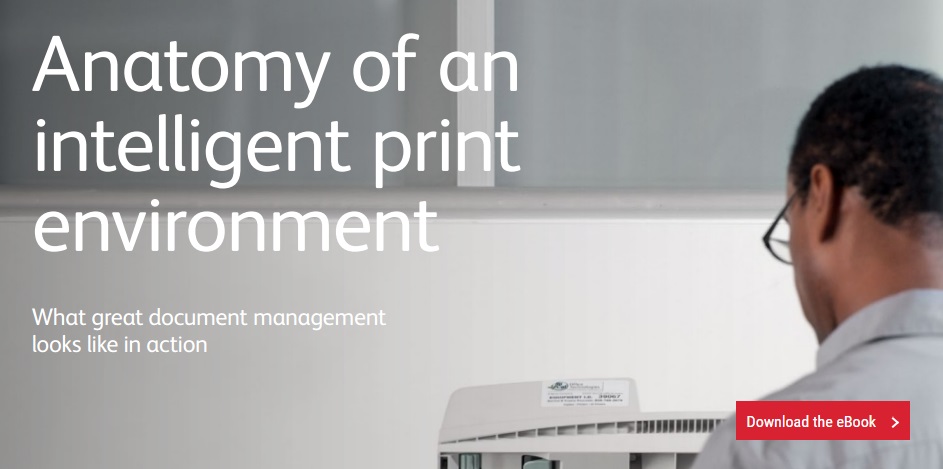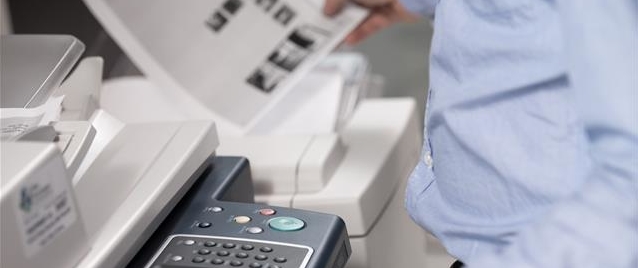Even today, with the mobile and cloud revolution in full swing, 40% of business processes are still document-driven1. The paperless office that was first talked about back in the 1970s just hasn’t happened.
But because printing is such an integral part of business, it’s often overlooked as a key component in finding smarter ways to work, operating more efficiently and cutting costs.
The problem is that many print environments have grown organically, with individual decisions taken in isolation to meet immediate needs. The result is a sub-optimal setup that could put a drag on your resources, people and even your bottom line.
So what would a day in the life of a perfect print environment look like? Let’s take a look.
Automatic Replenishment
It’s early morning, and the one thing the CEO’s personal assistant doesn’t have to worry about is running out of toner. He knows that it’s always on hand because the organization’s supplier automatically receives an alert when levels drop below a certain threshold in the MFP (multifunction printer).
The CFO is happy too, knowing that the company isn’t over-spending on supplies, and that they’re being sourced just in time and in a standardized fashion. And the head of IT is happy too. Because printer supplies aren’t a problem she’s got to worry about.
Reduced Support
It’s now past 9am, and the support team is focusing on more important issues, not the recurring printing problems that previously tied up their time, energy and resources. Those problems accounted for 40-60% of helpdesk calls2. Many printer problems can be handled without a physical visit, thanks to remote support.
Increased Visibility of the Bottom Line
Mid-morning and we’re back with the CFO. He’s running the numbers and he likes what he sees.
For the first time ever, he’s able to gain visibility of printing costs per department. That’s because the organization’s Managed Print Services (MPS) solution provides detailed records of who printed what, and who’s picking up the cost.
Previously, chargeback was logistically difficult and often disputed. Now, it’s entirely automated and it has the added bonus of making people think twice when it comes to just-in-case printing.
Printing Anywhere, Anytime
It’s lunchtime, and the sales director is meeting with the decision makers of a new account. Before they head off to their working lunch in the nearby conference room, the visitors need to print some spreadsheet numbers.
To their surprise, they find that connecting to the nearest network printer is quick, easy and hassle-free. And the sales director knows it’s completely secure, so there’s no question of their network being compromised.
As they near the conference room, they see the account director coming from the opposite direction. He’s made some last-minute adjustments to his proposal, and is printing from his Android tablet on the move. Since their printing setup is cross-platform, he can print just as easily as his iPad colleagues.
Optimized Setup
It’s mid-afternoon, and the HR Director is printing out the latest round of performance reviews. He used to print them on the shared color MFP at the other end of the building, but that was before the print assessment was done by the organization’s MPS partner.
The assessment showed how many printers there were, how they were being used and whether they were optimally placed for the workgroups they served.
As a result, the HR Director now has his own dedicated printer for confidential documents, which he prints in black and white. And on the rare occasion when he actually does need to print in color, he can do so securely on the newly repositioned MFP, where he releases the documents with his swipe card.
Increased Security and Decreased Waste
It’s almost going-home time and a recently hired marketing assistant needs to print out a section of the draft marketing plan for the next fiscal year. As it’s a work in progress with many contributors, it’s in a shared Dropbox folder.
At his previous company, this scenario required a two-step workaround: first he sent the document to his email program, then he printed. But here, with document processes completely integrated with the cloud, one click on the multifunction device and he’s done.
But just as he hits ‘print’, an important call comes in, and by the time it’s finished, he’s forgotten about the document and heads home. He remembers later and a colleague responds to his worried text, reassuring him that the confidential document is not lying in the printer tray for all to see.
It’ll be released only when he’s at the MFP and enters his PIN. And by morning, the document will have been superseded by an updated version, so the assistant can cancel the job without wasting paper.
That’s big. Because 25% of printed documents are never collected3, so all these small abandoned jobs add up to big potential savings.
Welcome to the Future
And so we come to the end of our day in a perfect print environment.
In this organization, printing is no longer just ‘something they do’, the way they’ve always done it. They’ve realized the value of having a comprehensive print strategy in place, and are already seeing lower costs, increased productivity and happier staff.
Outsourcing to a Managed Print Services partner has freed them up to focus on their core business. Already, they’re seeing a big ROI.
The good news is that this perfect print environment isn’t imagined – it’s here already, and it’s something you could implement right now. Check out our ebook ‘The Anatomy of an Intelligent Print Environment’ for best practices and tips to help you get started.
1. Poor document processes lead to significant business risk, IDC↩
2. Xerox RealBusiness Magazine – Gartner ITxpo Issue, 2012↩
3. Nuance – Based on Nuance Customer data / Internal Study of Help Desk Calls↩
Share this article on Twitter!
Tweet: What perfect looks like – and how this part of your business can be.
Tweet: Nailed it: a day in the life of the perfect print environment.
Subscribe to the Small Business Solutions Blog and receive updates when we publish a new article. [wysija_form id=”1″]




